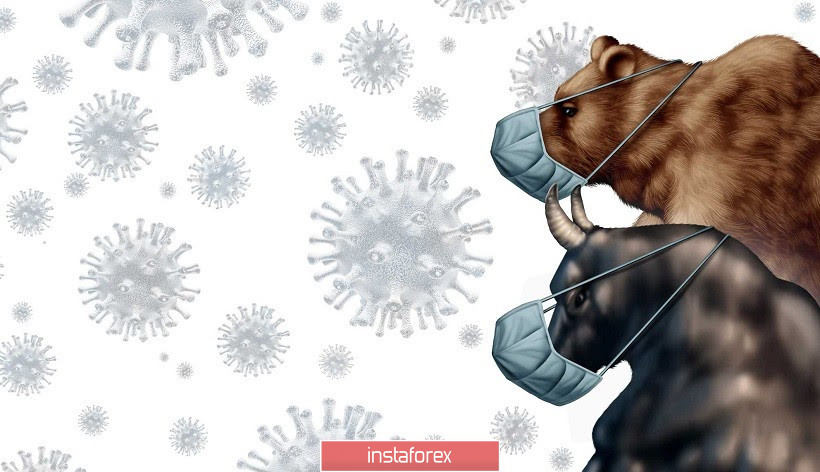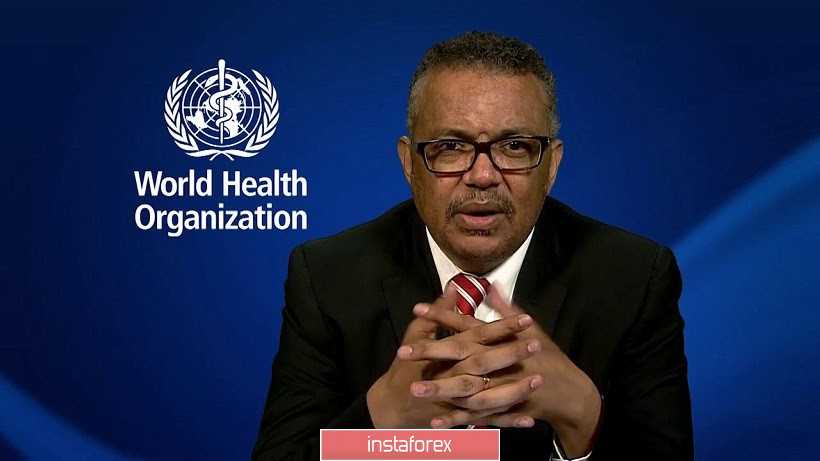The financial world has experienced another day of increased turbulence. The battle of traders for the US currency led to the fact that the dollar index rose to 103 points, reflecting the huge demand throughout the market. The euro-dollar pair again updated the low, reaching 1.0655 (the lowest since April 2017). At this level, the price momentum ran out, and buyers were able to afford a correction - primarily due to profit-taking. The pair was able to return to the area of the seventh figure during the Asian session on Friday, winning back a small part of the lost positions.
Looking ahead, it should be noted that such corrective price movements should be treated with caution. For example, trading on Thursday began in a similar way – with a tendentious correction, which was later replaced by a strong downward impulse. The undulating trajectory of the pair (for clarity, look at the hourly chart of EUR/USD) suggests that the dollar bulls may still return for their prey in the form of a sixth figure.

Moreover, there are no reasons for optimism at the moment. Yesterday's news that no cases of Covid-19 were registered in mainland China (all identified patients brought the infection from abroad) failed to reduce the overall level of panic – since everything is just beginning in the rest of the world. For example, in Italy, the number of patients who died due to a coronavirus infection has increased to 3,405 in the past day, exceeding the number of victims in China. In the last 24 hours, 427 deaths were recorded in Italy, and a day earlier, 475 patients died from the coronavirus. The incidence is also growing in other countries: over the past 24 hours, the United States has become the leader in the number of new cases of infection-5894 (and in total-more than 11,500). During this time, 1,046 cases of infection were detected in Iran, 5,322 in Italy, 2,993 in Germany, 4,053 in Spain, and 1,834 in France. At the same time, only eight people recovered in Germany, 26 in Spain, and only two patients in the United States. Covid-19 is expanding its geographical distribution: Chad, El Salvador, Fiji and Nicaragua have joined the countries already infected.
Restrictive measures are also being tightened in many countries of the world, including in the leading countries. For example, the authorities of the state of California forbade its residents to leave their homes without urgent need. Similar demands were voiced by the authorities of Spain, Croatia, Italy and some other countries.
Trump announced the cancellation of the G7 leaders' meeting at Camp David, which was supposed to take place in June. The following events have also been cancelled: European football championship, Champions League, Europa League, Cannes film festival, Eurovision, stopped the NBA and NHL seasons, the annual E3 game exhibition (Electronic Entertainment Expo), the TED conference, the Geneva motor show, and so on.
Forecasts of specialized specialists and scientists also do not inspire optimism. According to some estimates, the coronavirus can affect 40% to 60% of the world's population and take up to 70 million lives. And no one can say exactly when the epidemic will come to an end: for example, Chinese virologists believe that Covid-19 can be forgotten this summer, while scientists from the United States and Britain are more pessimistic – they are convinced that the pandemic will rage at least until the end of the year, and most likely, will take over in 2021.
Director General of the World Health Organization Tedros Adhanom Ghebreyesus said the day before yesterday that the world has begun the first trials of a vaccine against coronavirus – in particular, in China and the United States. This was facilitated by the decoding of the genetic sequence of the SARS-CoV-2 coronavirus. But this is only the first stage of a relatively long process – the final result will not be available for at least 10-12 months.

This news stream retains interest in the US currency – the dollar index continues to be above the 100-point mark. However, a strong oversold pair, as well as news from China and South Korea, allowed the EUR/USD bulls to go for a correction. In addition, the pair was supported by the oil market, which is also now actively recovering (the cost of a barrel of Brent oil returns to $30).
Thus, it is now advisable to take a wait-and-see position for the pair, especially taking into account Friday's trading. The currency market continues to favor the dollar, but, as we can see, the EUR/USD bears also need a respite – the pair quickly fell throughout the week. There is no question of a trend reversal – this requires that traders change their attitude to the US currency – or that the news flow regarding the spread of Covid-19 takes a more positive color. And until this happens, the threat of another collapse into the sixth figure will prevail over the EUR/USD pair.





















